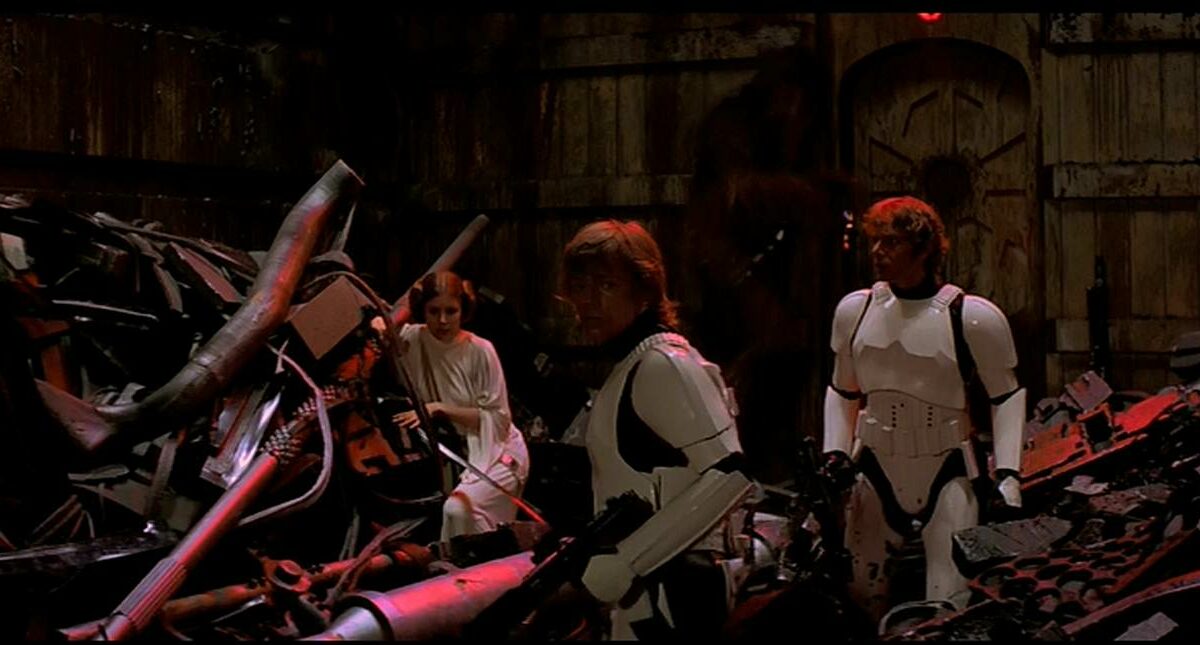In a few days, Netflix will release the much-anticipated second season of Stranger Things. The popular, nostalgic homage to 1980s sci-fi/thrillers is part of a growing number of TV-worlds that reflect stand-out traits of the collective journey. Along with shows like Game of Thrones, Westworld, OA and Master of None, Stranger Things is not about the glorious eternal return of heroes, but rather, as Jeff Gomez (creator of the collective journey model) says, “[These stories] are about communities struggling to achieve efficacy through the power of their own diversity.”
We live in complicated times. Just a few days ago, former president George W. Bush said in a speech given in New York, “At times, it can seem like the forces pulling us apart are stronger than the forces binding us together. Argument turns too easily into animosity. Disagreement escalates into dehumanization. Too often, we judge other groups by their worst examples while judging ourselves by our best intentions.”
While Stranger Things is first and foremost an entertaining show, it also has served to unite more than 14 million viewers last year alone. So, what’s behind the storyteller magic that brings so many people together, and more importantly, what might brands learn from their formula? Here’s three possibilities:
1. Move Beyond The Binary
Stranger Things is not about a singular hero defeating a singular enemy. Who is the enemy? Is it Dr. Brenner, is it the Demogorgon? Are Dr. Brenner and the Demogorgon simply the conscious and unconscious manifestations of the same individual?
Collective journey tells us that the classical struggle of good against evil is too highly contrasted to describe the myriad shades of grey that is the actual world in which most of us live. What’s right and what’s wrong? Who’s beliefs are virtuous? While the media used to be largely responsible for telling many people what to think, disintermediation has brought vast numbers of alterative perspectives into the mix. There isn’t always a singular answer.
To seek a savior to rescue us from threats requires an evil that must be defeated. As Jeff Gomez says, “Systemic challenges cannot truly be resolved by one side soundly defeating all others, or by one side solving the crisis by themselves.” Regardless of where you stand politically, the enemy isn’t Trump or the people who voted for him. It’s not Angela Merkel or refugees. It’s not conservatives or progressives.
The real enemy is an ever-evolving and increasingly complex web of real and imagined threats that drive two very basic human emotions – worry and fear.
Back in February, Mark di Somma argued for reasons Why American Brands Should Avoid Politics. He says, “These are emotional times. And brands are powered by emotions. Instead of playing politics, brands should perhaps be looking to meet the wider needs of their customers by providing reassurance, reinforcement, support, inspiration … brands have an opportunity in this environment to do something powerful.”
If we are to fix the system or change the system, we need to come together. The more people, brands, mainstream or fringe media look to battle a singular villain, the longer it will take us to achieve real change. Instead of taking a position that claims to be “on the right side of history”, brands should direct their energies into creating a better present for their customers and the communities they have the power to impact. It’s about doing what’s right, not about being right.
2. There Is An “Upside Down” For Everything
In a fascinating article titled Stranger Things and the Jungian Shadow, Steve Five says, “Quite literally, Stranger Things posits the conscious and the unconscious together in real life by fusing the dark, anti-reality with our reality. The very real physical setting of Stranger Things mimics and can be compared to the mind in its wholeness — Conscious and Unconscious. Whereas we know and understand the initial setting — a small Indiana town in the 80’s — we have no understanding of the upside down. It’s just black, like our unconscious.”
One positive indication that we are on our way to achieving systemic change is the reckoning many brands are having with their own shadow-selves. Airlines have had to face some ugly truths about outdated regulations regarding how they treat their passengers. And change happened fast because people have access to more information with which to hold executive leaders accountable for their actions. Even right now, the Harvey Weinstein scandal is likely the tip of an iceberg for the brand of “Hollywood” to acknowledge its darker side of abuse of power to drive lasting and meaningful change that’s long overdue. Beyond Tinsel Town, the Weinstein Effect has begun to rattle the nerves of many in politics, major media outlets, and major corporations.
Every person, every brand has a shadow-self. In a Psychology Today article, Dr. Steven Diamond says, “Despite its well-deserved reputation for wreaking havoc and engendering widespread suffering in human affairs, the shadow–in distinction to the literal idea of the devil or demons–can be redeemed: The shadow must never be dismissed as merely evil or demonic, for it contains natural, life-giving, underdeveloped positive potentialities too.”
Brands must come to terms with their darker selves. Many are already doing it by putting programs in place to overturn past practices of reckless corporatism, misogyny and racism and other dark-stuff.
3. Cult Branding And Tribal Appeal
On a LinkedIn thread this week, Hilton Barbour shared an interesting article on customer trust. Commenting on that thread was Chris Kneeland, Co-Founder of Cult Collective, The Gathering, & Commun-o.com, who offered, “I’ve often said that cult brands care more about what they stand for than what they sell… We’re witnessing the artificial stimulants of mass media and markdowns failing to work like they used to, and we have more and more examples of brands that overdose on these “drugs” (i.e. Toys R Us, Macy’s, Quiznos, Payless, etc), which will hopefully wake more brand leaders up to the idea that they’ve likely been going about their jobs all wrong and a new playbook is required. Personally, I prefer to copy the plays of cult brands who are doing it spectacularly right.”
Stranger Things is in many ways, a cult-show that found wider appeal than its creators ever imagined. But it uses a cult approach to its fan base which is only helping to drive momentum. By their nature, cult brands are masters of this, but can a global brand or national brand apply some of the tricks cult brands use? Yes. These larger brands need to be thinking tribally to activate the networks formed by shared passions and interests. Frito-Lay did this when they tapped chef/TV personality Ann Burrell to create a pop-up restaurant in Manhattan. They activated the foodie tribe without alienating anyone else.
When shows like Stranger Things manage to captivate so much of the public’s love and attention, brands need to pay attention, because there’s so much more that can be learned.
The Blake Project Can Help: Accelerate Brand Growth Through Powerful Emotional Connections
Branding Strategy Insider is a service of The Blake Project: A strategic brand consultancy specializing in Brand Research, Brand Strategy, Brand Licensing and Brand Education





2 comments
Tim Day
October 28, 2017 at 8:55 am
Great insights. A few key indicators that support these points you make: 1) extensive character development that allows for complexity and nuance in relationships and motivations, 2) attention to detail in dialogue and setting that make this world specific, 3) pace that allows time to reflect, and 4)a view of the world that emphasizes the forces that play on people while rejecting simple “hero” and “villain” motifs to create artificial drama. The challenge for many companies is that they operate at such a pace that they don’t have time to truly develop a meaningful story to engage their customers and clients.
Chris Wren
October 30, 2017 at 8:39 am
Hey Tim. I love these indicators you call out, and agree that many companies are challenged with regard to their goal timelines. So how do we fix this? One idea might be that we can look outside of marketing more to what’s happening in the culture; uncover what’s captivating humans out in the big world. If we can relate some of this to stakeholders in a tight, succinct way; or do more collaborative exercises that mind-map winning attributes and similarities – we might be better able to convince those in charge to slow down, and take the time to craft something special and unexpected.
Comments are closed.